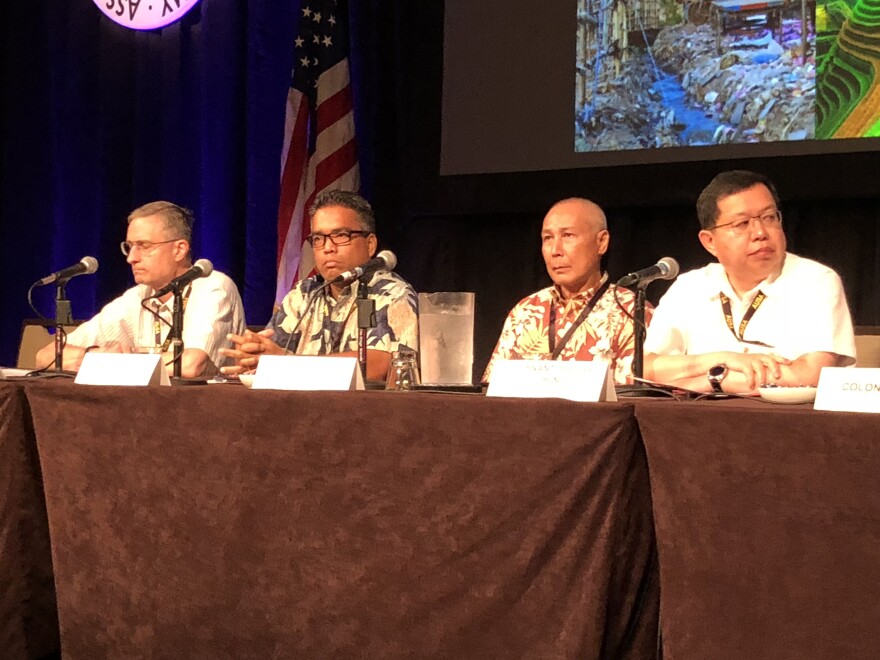More than 1,200 military and civilian attendees from 26 countries are in Waikiki this week for a 3-day conference. HPR’s Wayne Yoshioka reports.
The Indo-Asia-Pacific Region, as we’ve heard before, is home to about 4-billion people from 36 countries and occupies more than half of the earth’s surface. Maj. Gen. Ronald Clark, commander of the 25th Infantry Division, says the U-S national defense strategy is characterized by the 4-plus-1 construct.

“The four, in the construct are China, Russia, North Korea and Iran. The plus one is violent, extremist organizations. It’s interesting to point out, that 3 of the nations, along with violent extremist activity and organizations are present in the Indo-Asia-Pacific Region.”
And, the nuclear threat from North Korea is real and exponentially lethal. That, according to RAND Corporation Senior Defense Analyst, Bruce Bennett.
“If North Korea uses a 10KT roughly nuclear weapon – Hiroshima size – in Seoul, over 300-thousand people would be killed or seriously injured. But if they then turn to the size of their 6 nuclear tests last September, up to 250KT, now you’re talking about potentiall 3.5 million people killed or seriously injured.”

But, retired Republic of Korea Army Lieutenant General In-Bum Chun, says North Korea has capabilities even more ominous and unknown to many in the Western World.
“North Korea is a cyber superpower. I
say again. Cyber superpower. This is a
bigger threat, even more than the
nuclear weapon of chemical weapons, I
see cyber as a bigger threat to us than
ever before. It’s not just the cyber threat.
They have other electronic technolgies.”

U-S Army Pacific commander, General Robert Brown, says the connectivity of the internet, the speed and velocity of information flow and unprecedented global complexity, requires teams that can thrive in ambiguity and chaos. This must also be accomplished across all domains: sea, land, air, space and cyber. And, it’s not only military operations but humanitarian missions as well.
“In addition to the normal cast of bad actors, we have to also contend, in the Pacific, with Mother Nature. A 2016 UN report said that by 2020, one billion people living in the Indo-Pacific region will reside in a disaster-prone area classified as High to Extreme Risk. One billion. And, tragically, we know that 7 out of 10 people killed in the world in a disaster, it occurs in the Pacific region.”
General Brown says the multi-national approach in military and humanitarian assistance will require relationship building in everything they do.
“You don’t start a relationship in a crisis. Hopefully, you have a great relationship and then you come together in that crisis. You cannot do it alone. These are complex problems.”
The 3-day symposium is hosted by the Association of the United States Army Institute of Land Warfare. Wayne Yoshioka, HPR News.




